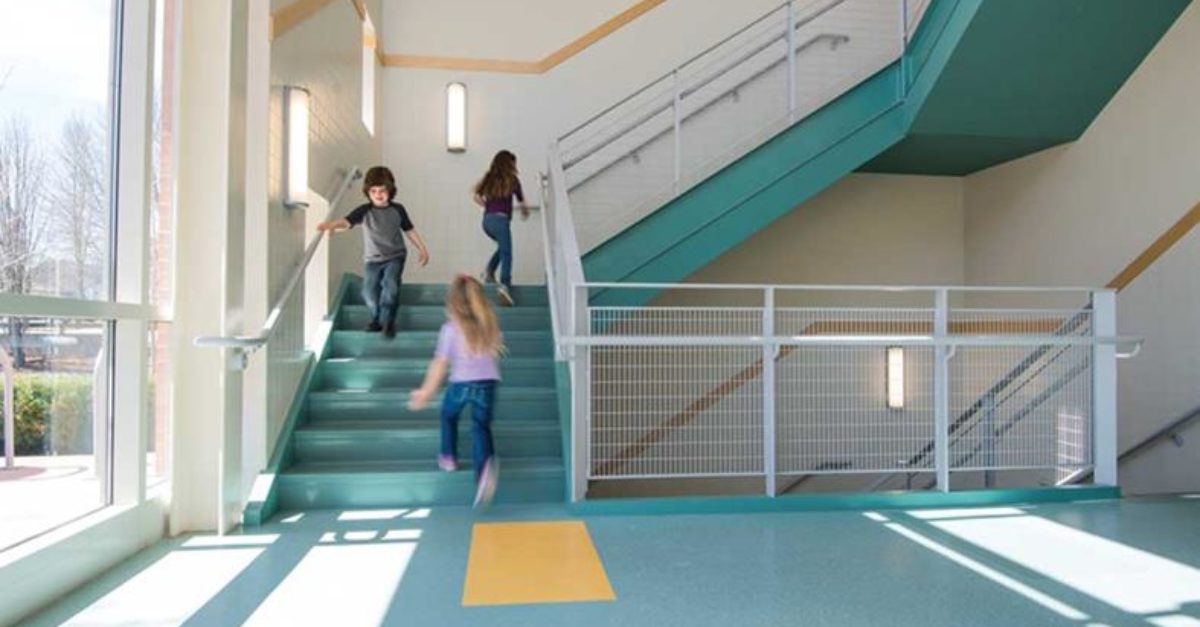Facility design elements are crucial in allowing building residents to experience and utilize the space in a healthy and productive manner. Healthcare facilities need to support concerns of fatigue, health, and safety, as well as address worker efficiency, environmental considerations, and acoustics. In a similar vein, the design of educational facilities should encourage learning and exploration while minimizing distractions for students and faculty.
Although education and healthcare facilities have marked differences in their built environments, they both benefit from building designs which muffle sound.
Create a Healing Environment
Noise is ever-present in the health care environment and can have a direct and measurable impact on patient health and satisfaction, staff productivity and ultimately impact operational reimbursements. The Hospital Consumer Assessment of Healthcare Providers and Systems (HCAHPS) survey, which provides results related to a patient’s experience of care, found noise to be the number two pain point for health systems in patient satisfaction scores in the hospital environment. Moreover, excessive noise disturbances can affect a patient’s ability to heal, potentially increasing the need for medication and impacting overall length of stay.
There are three contributing factors to disseminating sound in a space: the wall, the floor, and the ceiling. Research published in The Journal of Acoustical Society of America suggests that hospitals battle with noise and “chronic physiological changes are linked to a bad sound environment.” Health care facilities use hard surfaces to support infection control, such as drywall ceilings and acoustic wall panels. Unfortunately, these surfaces can be difficult to effectively clean and disinfect. Facility managers must select flooring that supports hygiene as well as acoustics.
As a structural component that covers every square inch of a building, the right flooring product can have an actionable impact on patient satisfaction, operational optimization, clinical efficiency, and total cost of ownership. Premium rubber flooring is a solution that can improve acoustics with reduced footfall sound and improve safety and cleanliness through its wasability. With low-maintenance requirements, rubber flooring allows for quick, quiet and nondisruptive cleaning, supporting a calm healing environment without compromising the integrity of perceived cleanliness.
Boost Concentration
The environment in which students learn can have a positive or negative effect on educational outcomes. A basic component of the learning environment is the ability to hear and be heard clearly. According to the Acoustical Society of America, many classrooms nationwide have a speech intelligibility rating of 75 percent or less, far below the recommended 95 percent. Furthermore, the noise levels in a typical classroom average 65 decibels, which is the threshold for serious health damage with long-term exposure.
Poor acoustics in educational facilities can lead to lower academic performance, fatigue, annoyance and stress. Schools and universities have the opportunity to evaluate sound-absorbing ceiling tiles and acoustical wall panels in their overall acoustical solutions. In addition to using these noise-mitigation measures, a third-party study found premium rubber flooring is up to four times quieter than vinyl composite tile.
Make Acoustics a Priority
The findings of the “in-room” impact noise study quantified how hard and soft flooring materials can impact the acoustic environment, allowing facility mangers to make informed decisions when selecting flooring materials. The study evidenced a significant degree of acoustical separation between 10 different floor coverings by using various impactors as noise sources. Results show the 4 mm premium rubber acoustic flooring provides greater or equitable “in-room” noise reductions as compared to carpet and the best reduction in impact noise from small falling objects.
“Noise is an adverse auditory event, it is neither benign nor considered neutral,” said Susan Mazer, PhD, founder of Healing HealthCare Systems Floor coverings can mitigate unwanted ambient noise and have a favorable impact on a building’s occupants, fostering health, wellness, learning and operational outcomes.



